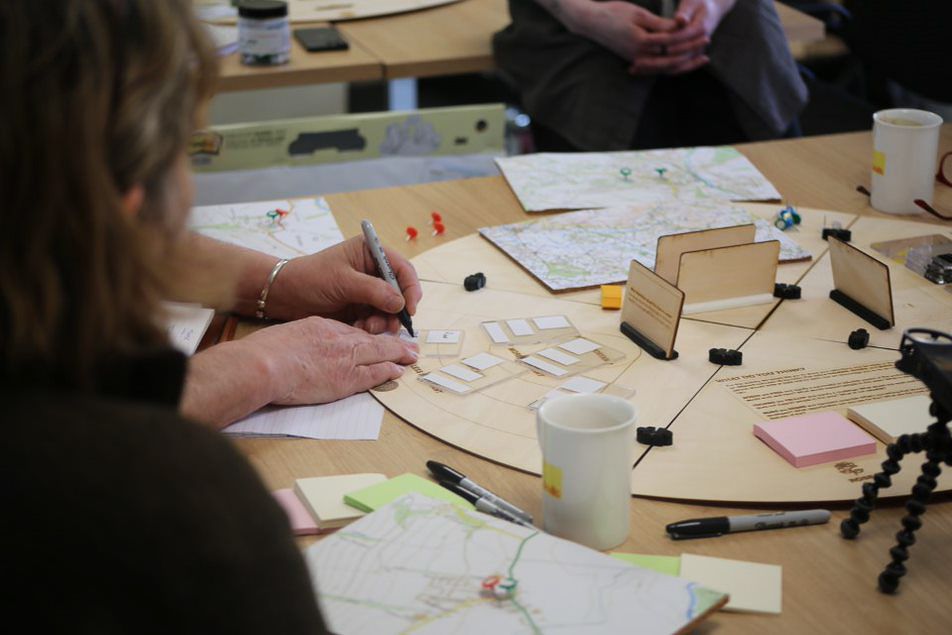
Tell us about Civic Probes, give us a brief summary.
"Civic probe" is a method that employs ‘prototypes’ that embody ideas (and questions) about the way civic information infrastructures could respond to specific contexts, issues, and environments, as well as embodying the research team’s ideas about what makes civic technology successful in communities. It uses a combination of prototypes and activities to frame and structure discussion and reflection.
Whereas most of the probes in HCI (technology probes, design probes) are in different ways focused on achieving an eventual design (going from probe to design) – the civic probe is attuned to draw focus upon the human infrastructure and civic practices that are integral to the usefulness and longevity of civic technology. With the civic probe method, we are not seeking to establish a set of user needs or problems, instead, we intend to bring the problems and key questions embedded within the civic probe.
How did you come up with the initial idea for this?
We have been doing civic technologies/community informatics/digital civics research for nearly a decade now, and we have accumulated quite a lot of knowledge about what works and what doesn’t work when designing technologies for various civic contexts.
However, even now, when we start a new project or collaboration with a community/municipality/civic organisation, we start our engagements (e.g. understanding context, requirements elicitation etc.) as if we don’t want to make visible our expertise in designing such technologies, including existing difficult challenges, but also opportunities for digital technology to transform civics.
Through the idea and method of “civic probes” we want to develop a series of example processes and workshops that introduce this experience in our new engagements from early on in projects. We have been thinking about this idea for a while now (building on established work in HCI and Design around the concepts of “design probes”), and we started designing our first example civic probe as part of our engagements with rural villages in the Northeast of England (a project which is part of the Centre for Digital Citizens and the Connected Citizen challenge area).
Our civic probe workshop for the pilot included re-configuring technologies that we used in past projects with local communities that had similar aims and designing new lightweight prototypes, then through the civic probe method and activities made visible the social and technical configurations that need to be discussed and decided for the sustainment and resilience of such technologies in-place.
Why do think it’s important to create tool thats help us better respond to important societal concerns? Do other tools like this exist elsewhere? How are Civic Probes different?
The probe is a term from medical science that literally refers to the process and means of finding out about the unknown. Specifically, a probe can refer to a tool used to internally examine someone, or a device put inside someone to test or record information but can also refer to an attempt to discover information by asking questions—often to discover information someone is trying to obfuscate or conceal.
The ideas of probes with HCI can be traced back to the cultural probe. This notion of a cultural probe is broadly speaking a package of materials designed to promote (or indeed provoke) inspirational responses from willing participants. The purpose of cultural probes is to understand situated knowledge to ‘sensitise’ designs and designers to local cultures without constraining designs or directing designers (see Gaver, Dunne and Pacenti, 1999).
A review of probes in HCI found, the term ‘probe’ can be repelled as well as evoke interest; is tied up in ideas of legitimacy (and lack thereof); and acts as a shortcut—a way to anchor work in relation to others (see Çerçi, Cecchinato, and Vines 2021).
Departing from this, the civic probe anchors our work in relation to previous civic technology scholarship, as such acting as a shortcut through what might be considered the traditional phases of a digital civics study like with technology probes (Hutchinson et al 2003) where the idea was to enable the families to affect the design of technologies for their homes more directly (as a departure from the ‘traditional’ interview-design-test process).
In turn, this affords opportunities for us to start from the things that go wrong and focus on the things that are required to make it go right. Here, like with the cultural probe, we are bringing our own experience and ideas about digital civic design, not being led by participants, and establishing opportunities for more focused dialogic engagement in the human, social and information infrastructures entangled in civic technologies.
The civic probe is both ambiguous and productive. It’s ambiguous because it embodies questions about what could be. It’s productive as it embodies knowledge of previous civic technology work acting as a type of shortcut, turning attention to the human infrastructure necessitated by sustainable civic technologies before the technology takes form.
It is "civic" in the sense it introduces the idea of ‘civic technology’ and asks for a civic response to elicit the perspective of a whole community, their stories, reflections, and concerns while also engaging those who would live with the technology in questions about the human infrastructure required to sustain and produce value from a design.
In this way, it enquires into the way the ‘body civic’ will respond to and live with a design. While the design probe is “centered on self-identity and personal significance” as well as relationships with others (Wallace et al., 2013) civic probes centre on collectivism and civic impact.
Can you give an example of how the Civic Probe method might be used in action?
The civic probe is in one sense a cluster of ideas that embody beliefs (and questions) about the way civic information infrastructures could respond to specific contexts, as well as embodying the research team’s ideas about what makes civic technology successful in communities.
In our pilot, one prototype was a set of ideas around public media, another about data visualisation (and a rural observatory), and another about was about public information screens (digital noticeboards).
The intention was to elicit residents’ concerns and ideas (within the constraints of our initial ideas), work out what was meaningful and what was practical, as well as (importantly) open discussion, identify assets, and manage expectations about what was needed to make things last over time (human infrastructure, buy-in, skills).
For example, in the data visualisation prototype, we created activities that asked people to sort and prioritise different data as well as mark on a map where the visualisation would be displayed and where it should come from or be collected from. These activities allowed us to probe into what data was valuable to different publics and at different times and contexts, but it also focused debate and promoted practical discussion on situatedness (where things should go and why) and governance (who would be responsible for maintenance and moderation).
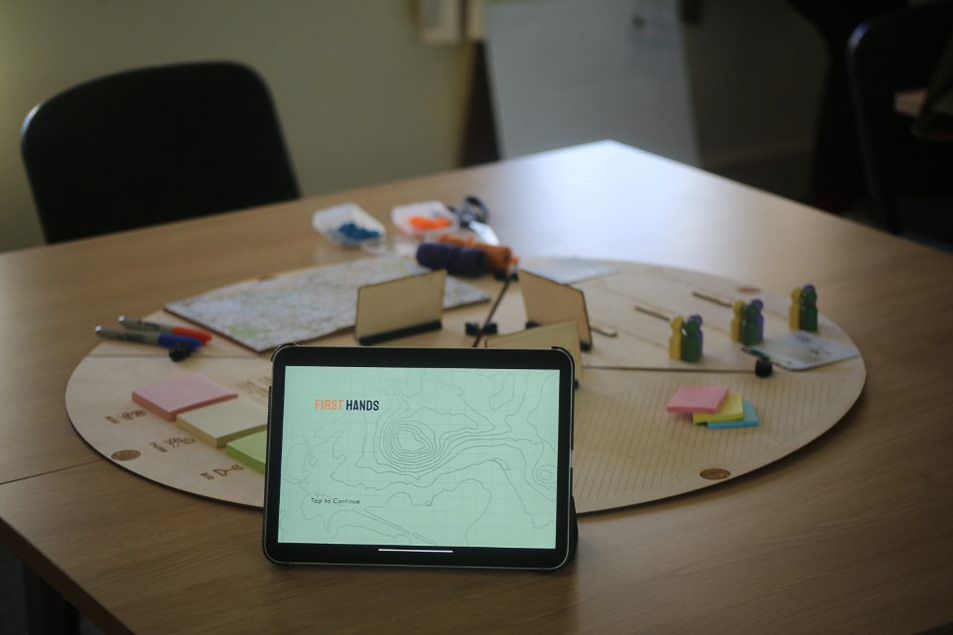
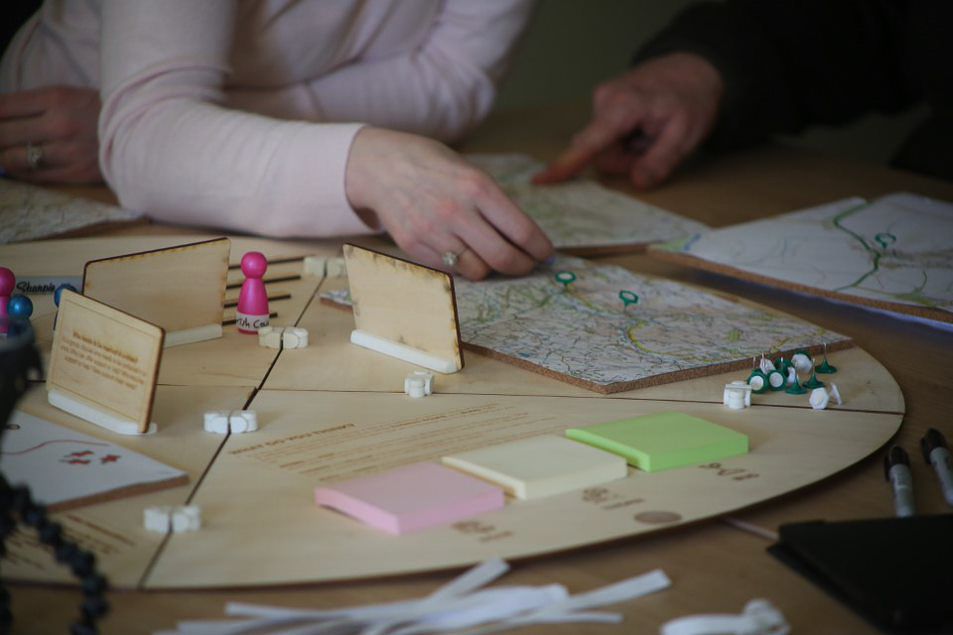
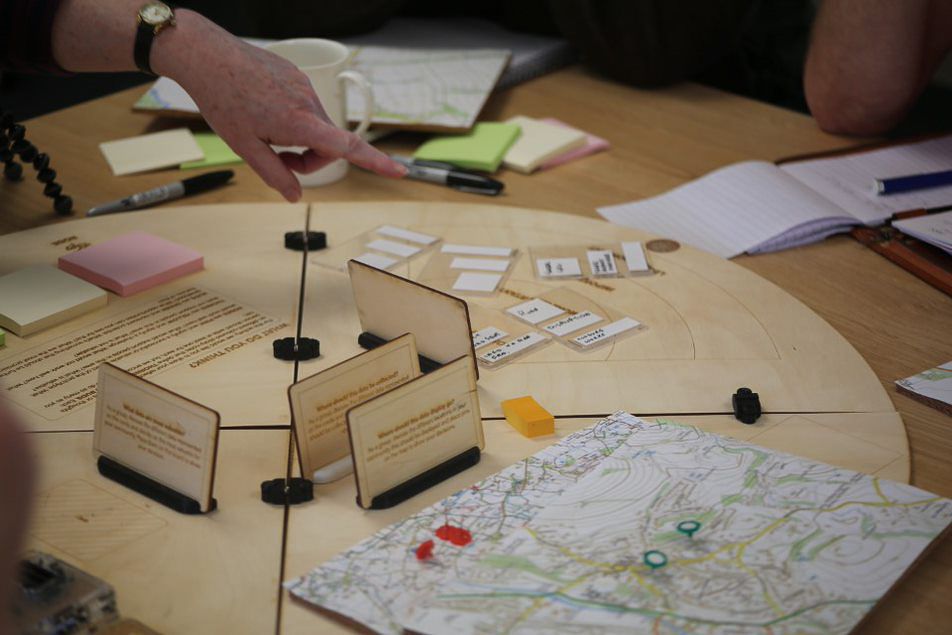
Why did you work with rural civic organisations and residents in the pilot? What made them a good group to work with for this?
Even though a lot of our significant research and technology development is with and within civics, most of our studies focus on urban contexts. As we found out in our work on Rural Informatics, even when we worked with rural communities and contexts, we were engaging them while carrying urban-centric assumptions about technology design in community organization, politics of place etc.
When we faced the opportunity to work with these rural villages, we wanted to do things differently and try as much as possible to question our own assumptions of technology’s role, including some assumptions embodied within digital technology itself (e.g., scale in social computing systems).
We wanted to do this however in a way that didn't disregard our experience in working in civic contexts more generally – there are challenges of using technologies within communities and for civic purposes that are applicable to the particularities of rural life, as well as the need for both technology configuration to meet people’s capacities and skills, and social adaptation for the sustainment and resilience of the digital.
Our Civic Probe process was the result of this interplay between staying true to the needs of the context, while also bringing our own expertise “on the table” for discussion.
How did people react to taking part in the project?
The civic probe workshop is part of an ongoing collaborative partnership with the Glendale Gateway Trust and the pilot was used as an opportunity to get together Parish Councilors from the wider Glendale area as part of coordinating exploration and research about resilience in the area in the face of extreme weather conditions, power cuts, and other crises.
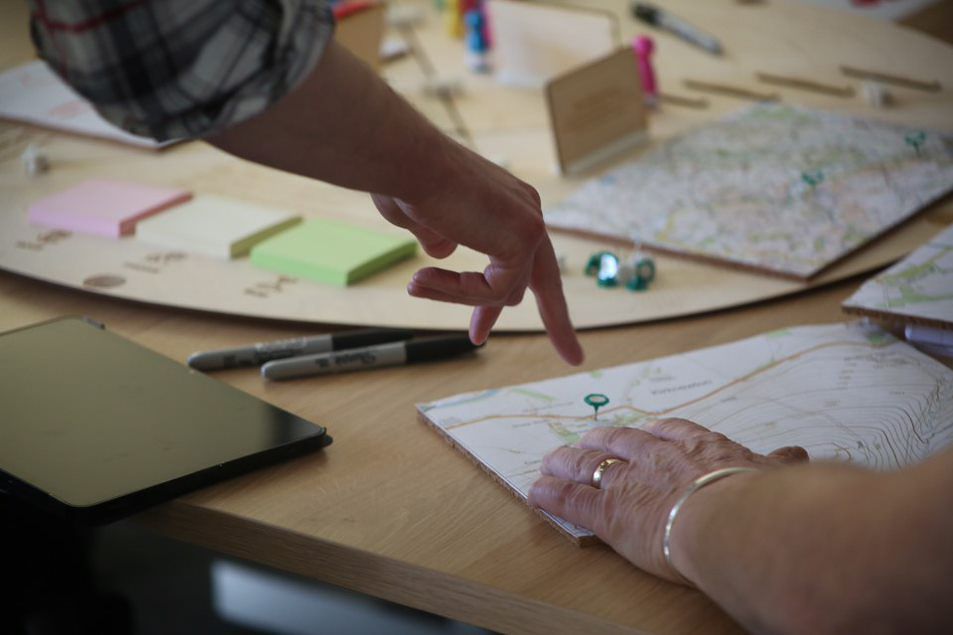
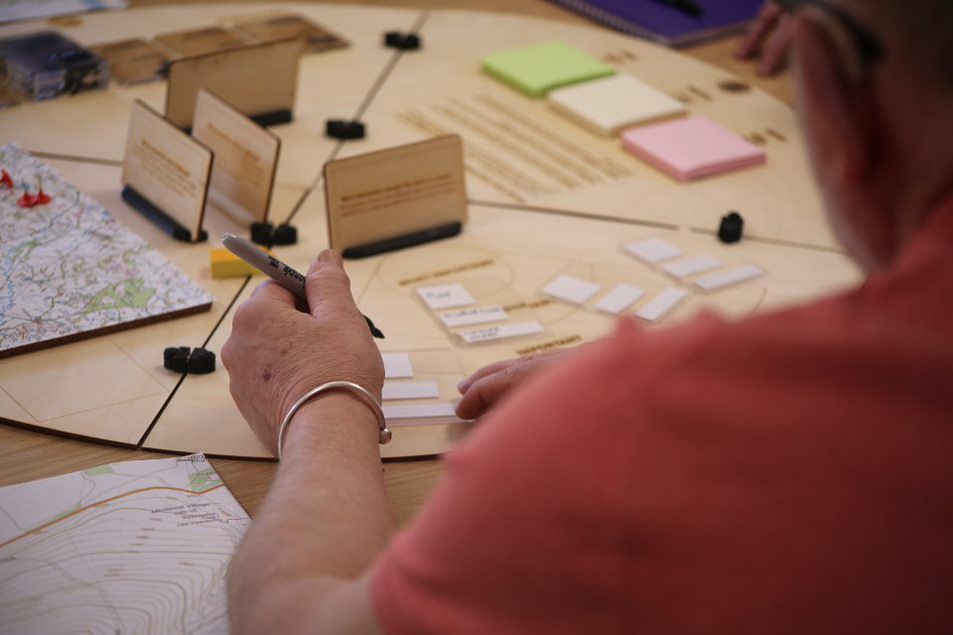


During the 2-hour workshop participants were introduced to three probes and engaged in questions, discussion points, and activities associated with each prototype. The method showed promise as a way of bringing different perspectives into a focused discussion that focused on the realities of place – the assets and potential within communities rather than ‘needs’ or ideas for technology.
The pilot was well received and there are plans afoot to repeat the workshop format at future area events.
What next for Civic Probes?
We want to design a series of exemplar civic probes that make visible and more obvious the useability of such a method for digital civics research.
We believe that such probes will allow the further dissemination of digital civics and community informatics work, as well as its ‘translation’/interpretation in other contexts – for example, the use of Digital Civics findings to inform formal methods of doing participatory technology design projects within larger organisations (e.g. government, large public media organisations etc.) and/or as a way of raising critical questions in relation to ethics and responsible innovation.
How does this project fit with the themes from the Centre for Digital Citizens?
This work is part of the Connected Citizen challenge area within the Centre for Digital Citizens project. The project aims to engage with a context (rural areas and villages) that is typically left out of conversations about technology design for civic participation. As such, it attempts to extend our breadth of understanding for what it means to be a “digital citizen”.
Being “connected” is not achieved in the same ways in all contexts (e.g., connected citizenship in cities and urban centres looks very different from connectedness in rural areas), while some people, geographies, and socio-economic groups are left out and are excluded. This project is our first step towards a better understanding of such challenges, towards the development of more inclusive digital access to civic services and information.
PhD students Gareth McMurchy and Joseph Hutchinson supported this work.